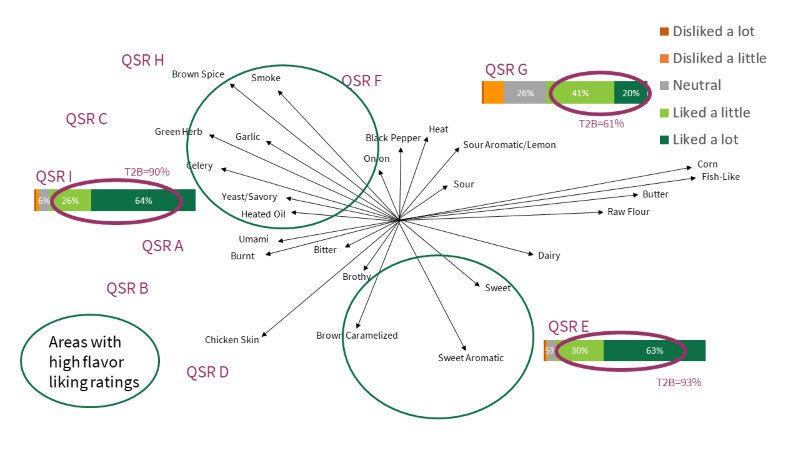
What’s data-driven, insights-inspired, and gives your brand targeted guidance on food product development? Our proprietary process — ConSensUs Mapping.
The Traditional Product Development Process
The typical product development process involves developing towards an assumed target product. Many new products evolve from what someone believes consumers want, an experience they had, or a single piece of research. Developing new products based on these assumptions can be risky, and the resulting products often fail because of the speculative nature of the traditional development process.
How is Griffith Foods’ ConSensUs Mapping Different?
Our proprietary process combines consumer insights and a sensory map of a particular product category. Our professional sensory panelists first define product attributes, so we know how products within a category compare. Then we explore consumer insights to uncover preferences for flavor, texture, and appearance. The resulting map provides a complete understanding of products’ sensory characteristics and how those attributes are driving consumer preferences.
Understanding Marketplace Opportunities with ConSensUs Mapping
ConSensUs Mapping provides targeted, robust direction for product development because consumer preferences guide it. The map both identifies the sensory attributes of products within a category — whether that’s flavor, texture, appearance, aroma — and charts how desirable each is among consumers. Using this information, we can position a new product or make adjustments to an existing product, knowing exactly where it will fit in the marketplace.
Analyzing Existing Products to Compete in the Marketplace
We can use a ConSensUs Map to identify the sensory characteristics of existing products and develop towards something similar to stay competitive in the marketplace. For example, the flavors of crispy chicken sandwiches from QSRs can vary from garlic to corn to black pepper. Trained panelists can identify flavors, intensities, and where products fall on the flavor spectrum. Overlaying consumer insights onto the identified attributes gives us an idea of the most preferred flavors: The resulting map tells us that products with the strongest notes of sweet aromatics were most well-liked among consumers. This information can guide us to develop a product that will most closely compete with what consumers are saying are their favorites.

Identifying and Filling Whitespace to Fill Unmet Needs
The ConSensUs Mapping process can also identify attributes that people want in a product but might not find in anything existing in the marketplace. By overlaying the sensory map with consumer preferences, we can see how successful current products are in meeting consumer desires. If consumers indicate they desire a certain flavor, texture, aroma, or appearance, but there’s no existing product that fits that description, we know there’s an opportunity to develop a new product that can fill that space.
Better Understanding, Better Products
ConSensUs Mapping is the fuel behind the product development fire. Expertise from trained panelists helps us pinpoint specific product attributes across a category. Consumer research reveals which of these attributes shoppers and diners are looking for. Put this research together, and the resulting ConSensUs Map gives us assurance that our products will resonate with consumers — and ultimately be successful in the marketplace.
Let’s Create Better Together
We’re here to help inspire creations that keep your product portfolio on trend. Contact your Griffith Foods representative or reach out to our sales team to learn more about our ongoing research and innovative offerings.



